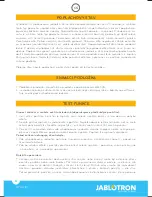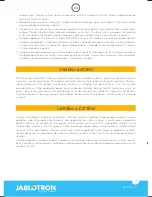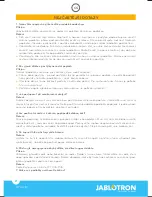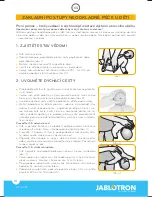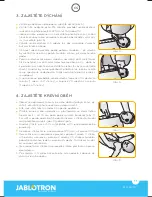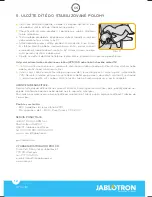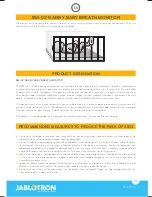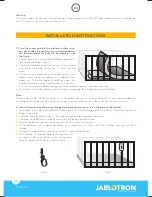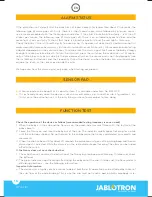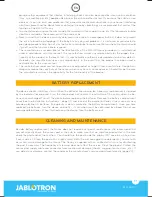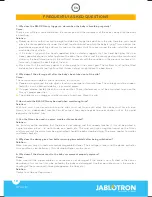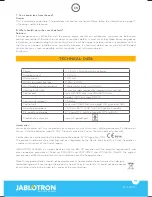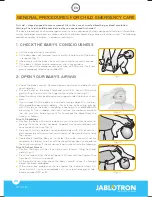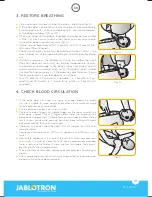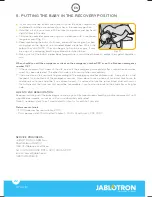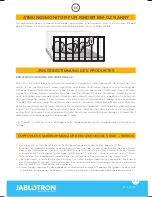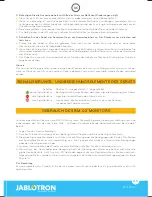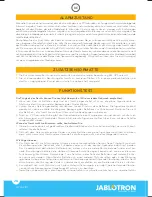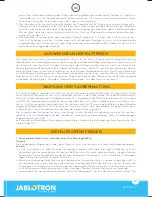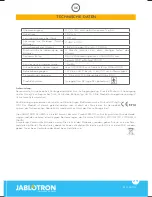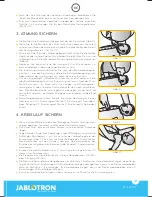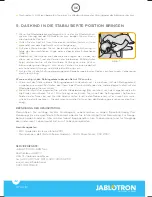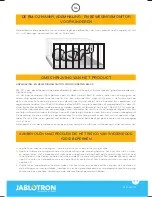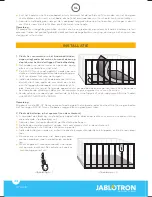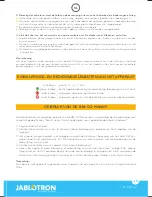
20
EN
MFV52110
GENERAL PROCEDURES FOR CHILD EMERGENCY CARE
First aid – steps designed to save someone’s life in the case of arrested breathing or blood circulation.
Warning: First aid should be administered by an experienced fi rst-aider!
The basic procedures of child emergency care include a sequence of steps designed to restore suffi cient bre-
athing and blood circulation in children who have suffered breathing or blood circulation arrest. The following
procedure applies to babies – newborns and infants:
1. CHECK THE BABY’S CONSCIOUSNESS
Call the baby distinctly and loudly.
If the baby does not respond, tap or scratch its sole to elicit the baby-
’s response (fi g. 1).
Alternatively, rub the baby’s back with your hand for several seconds.
If the baby is lifeless and unresponsive, she is unconscious.
Call your local UK emergency rescue service on 999 or dial the Euro-
pean emergency telephone number 112.
2. OPEN YOUR BABY’S AIRWAY
Check the baby’s mouth. Remove obvious obstacles and objects with
your fi ngertips.
Put one hand on the baby’s forehead and tilt its head a little, while
gently lifting the chin with the fi ngers of your other hand (fi g. 2).
Keep the airway clear by placing some support under the baby’s shoul-
ders.
If you suspect that the baby has inhaled a foreign object (i.e. the bre-
athing problem occurred suddenly – for instance, while eating, playing
with a tiny toy; or the baby is coughing, wheezing, has audible diffi culty
breathing, its face is reddish and neck and face are swollen meanwhile
the skin may turn blue or grayish). Try to remove the object from the
airways as follows:
Give 3–5 backslaps
Position the baby with her face down on your forearm. Her head must
be lower than the rest of her body. Support her head and body with
your hands all the time (fi g. 3).
Give her 3–5 slaps between her shoulder blades with 2–3 of your fi n-
gers or possibly with your hand; your hand must be oriented away from
the airways.
Alternatively, hold the baby by its ankles, (the ankle area must not be
covered with clothes), turn her with her head facing down and perform
the same maneuver. If the maneuver is not successful do the following:
Give 3–5 chest thrusts
Position the baby with her face up on your forearm, tilting her head
gently (fi g. 4).
Press the lower half of the chest bone 3–5 times with two fi ngers. Give
her about 1 thrust in 3 seconds.
At the end of each step, check the baby’s mouth to see if a foreign
object has been dislodged.
If the respiration problem continues, repeat the individual steps 1–3
times and call – or have somebody call – your local emergency tele-
phone number 999 or 112.
Fig. 1
Fig. 2
Fig. 3
Fig. 4

